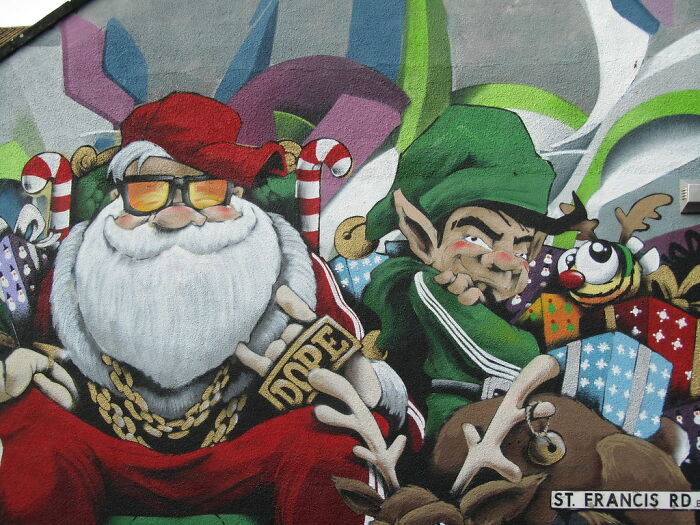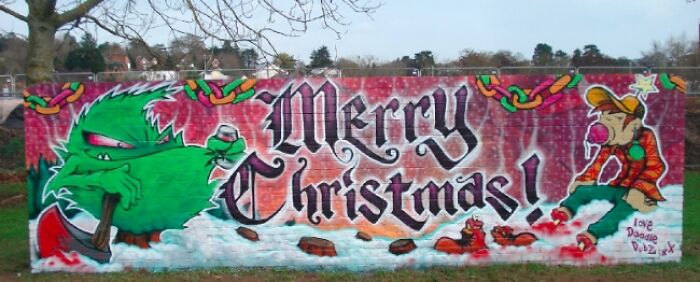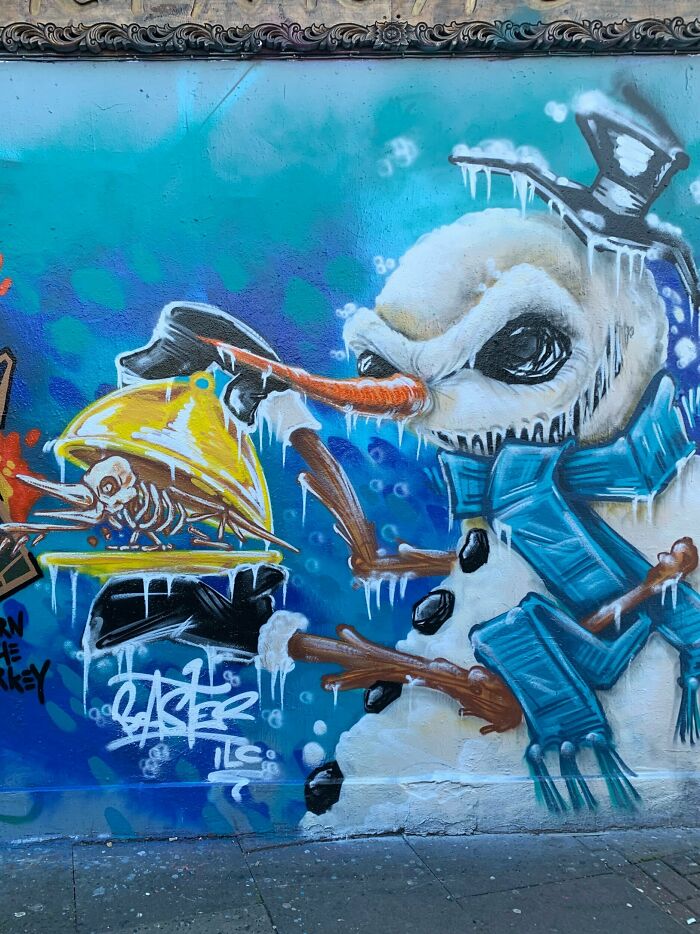
Christmas Street Art And Integration Of Street Art In The Urban Cities
Street art is visual art created in public locations for public visibility. It has been associated with the terms “independent art”, “post-graffiti”, “neo-graffiti” and guerrilla art.
Street art has evolved from the early forms of defiant graffiti into a more commercial form of art
It is often meant to provoke thought rather than rejection among the general audience through making its purpose more evident than that of graffiti
Graffiti is usually done illegally, whereas street art can nowadays be the product of an agreement or even sometimes a commission
However, it remains different from traditional art exposed in public spaces by its explicit use of said space in the conception.
Street art is a form of artwork that is displayed in public on surrounding buildings, on streets, trains and other publicly viewed surfaces
Many instances come in the form of guerrilla art, which is intended to make a personal statement about the society that the artist lives within. The work has moved from the beginnings of graffiti and vandalism to new modes where artists work to bring messages, or just beauty, to an audience.
Artists may appreciate the challenges and risks that are associated with installing illicit artwork in public place
Some artists may use “smart vandalism” as a way to raise awareness of social and political issues, whereas other artists use urban space as an opportunity to display personal artwork.
Some street artists have earned international attention for their work and have made a full transition from street art into the mainstream art world
— some while continuing to produce art on the streets. Keith Haring was among the earliest wave of street artists in the 1980s to do so.
Graffiti artist Haze has provided font and graphic designs for music acts such as the Beastie Boys and Public Enemy
Traditional graffiti and street art motifs have also increasingly been incorporated into mainstream advertising, with many instances of artists contracted to work as graphic designers for corporations.
Artistic recognition has led street art to become one of the ‘sights to see’ in many European cities
Some artists now provide tours of local street art and can share their knowledge, explaining the ideas behind many works, the reasons for tagging, and the messages portrayed in a lot of graffiti work.
Many of these guides are painters, fine-art graduates and other creative professionals that have found the medium of street art as a way to exhibit their work
With this commercial angle, they can let people into the world of street art and give them more of an understanding of where it comes from. It has been argued that this growing popularity of street art has made it a factor in gentrification.
The Mural Arts Program established in 1984 has helped Philadelphia earn praise as the “City of Murals”
Programs in the Pennsylvania cities of Philadelphia and Pittsburgh provide funding to agencies who employ street artists to decorate city walls.
Sarasota Florida, hosts an annual street art event, the Sarasota Chalk Festival, founded in 2007
An independent offshoot known as Going Vertical sponsors works by street artists, but some have been removed as controversial.
Montreal Canada is With over 80 murals and counting since the foundation of MURAL Festival in 2013
It is the annual street art festival contributed to creating Le Plateau-Mont-Royal as an epicenter for urban arts. Villeray, Downtown Montreal Le Sud-Ouest, Hochelaga-Maisonneuve, and multiple art districts also continue to broaden the street art circuit within the Island of Montreal. The Under Pressure annual graffiti festival, the largest of its kind in North America, celebrated its 25th anniversary in 2021.
Explore more of these tags
Serious question: Isn't this still illegal graffiti/tagging if the artist doesn't have permission to create their "street art" on the wall/building/etc?
Serious question: Isn't this still illegal graffiti/tagging if the artist doesn't have permission to create their "street art" on the wall/building/etc?

 Dark Mode
Dark Mode 

 No fees, cancel anytime
No fees, cancel anytime 






























































1
1